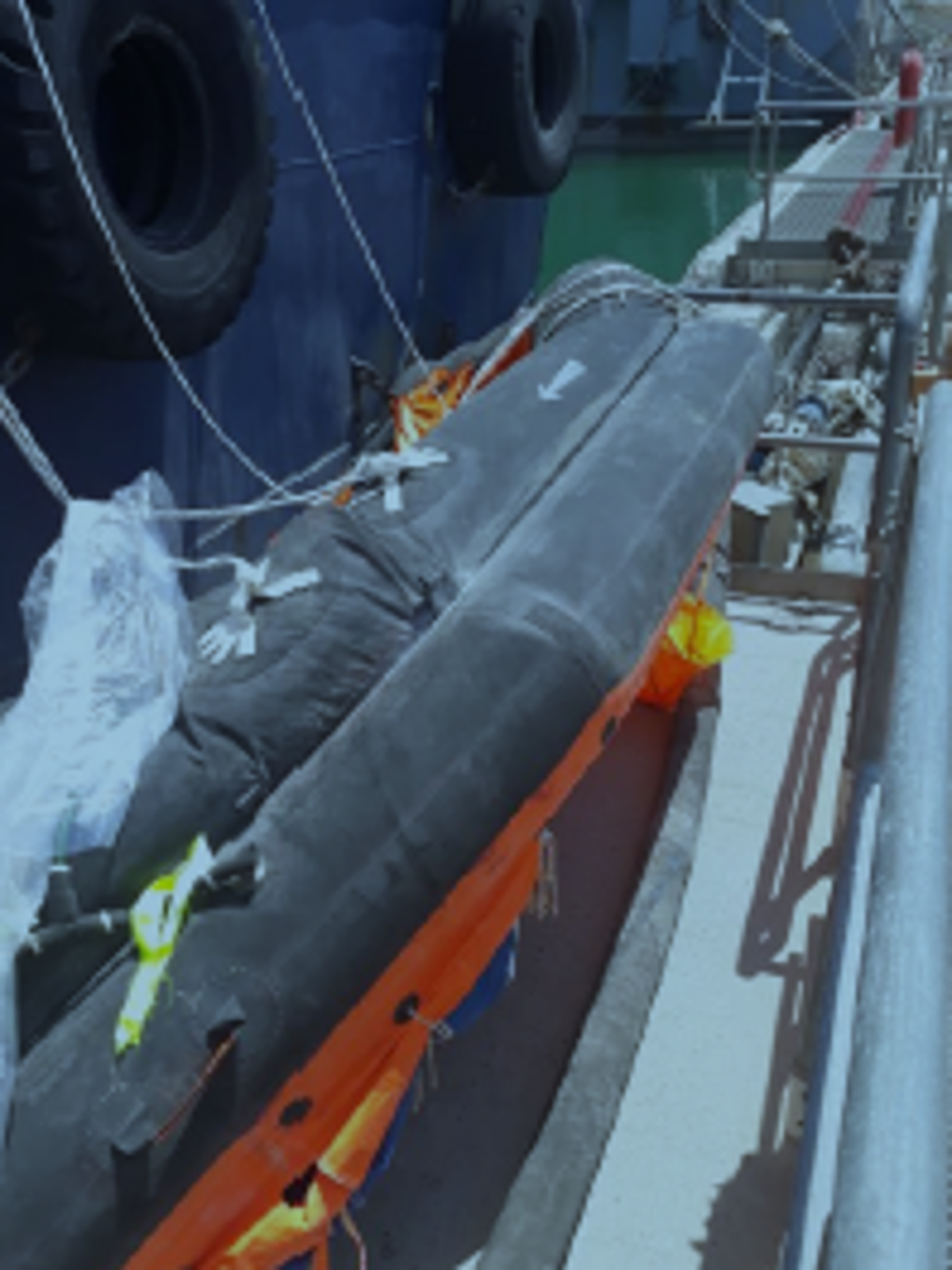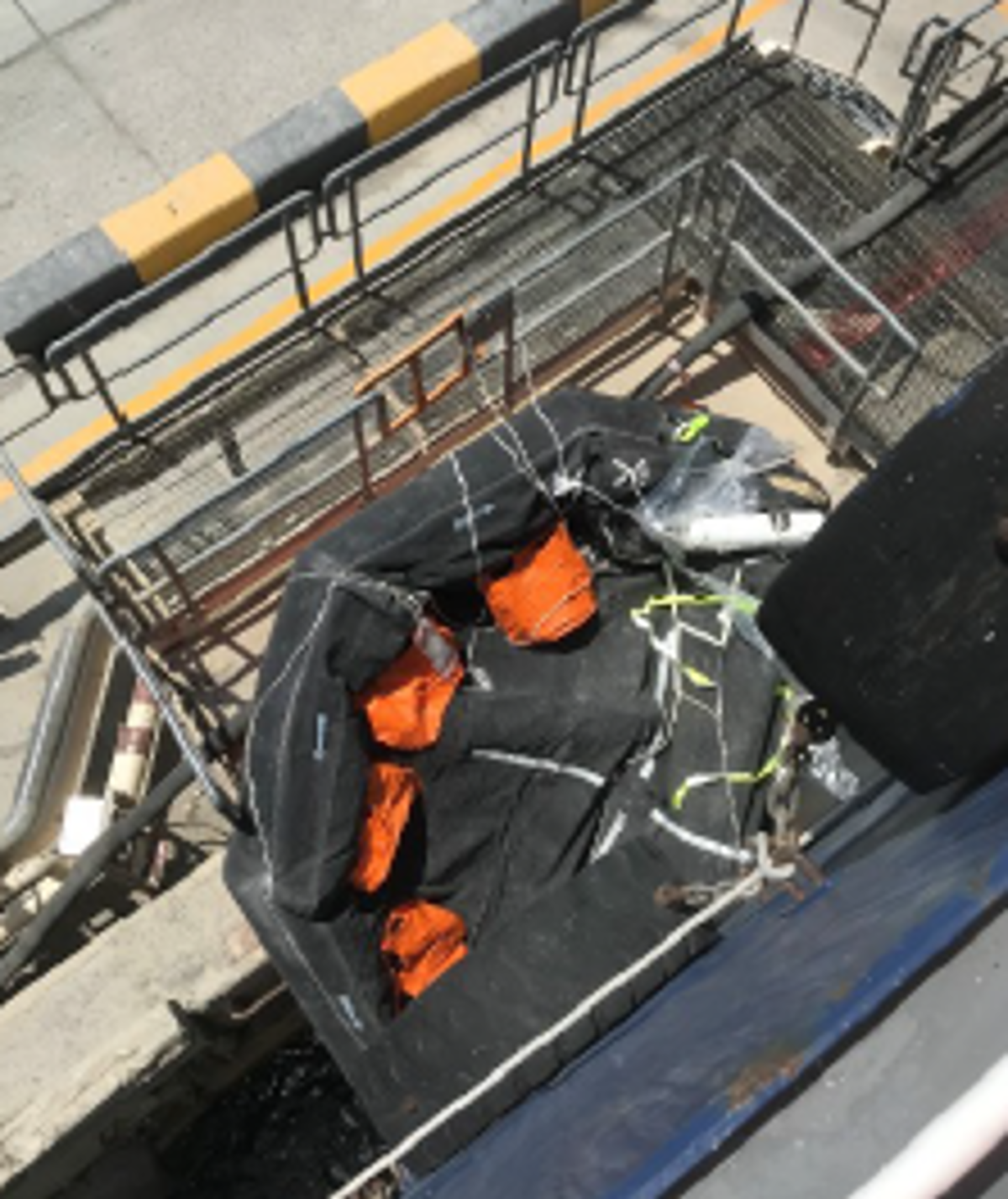Life raft self-activates and falls to the quayside
- Safety Flash
- Published on 17 September 2018
- Generated on 21 December 2025
- IMCA SF 21/18
- 2 minute read
Jump to:
A life raft self-activated and fell from its cradle from the vessel deck, 8m down onto the barriered quayside bollard area.
What happened?
The weather temperature at the time was 44°C.
The life raft securing straps, pennant line and life raft station security belts were inspected, and no signs of external impact observed. Investigation identified that the life raft self-inflated following sudden release of gas from the gas cylinder. Further inspection of the cylinder by a third-party showed no damage or corrosion to the bushing disc or the circular piece cut; internal inspection of the cylinder found no excessive surface corrosion.
There were no personnel injuries, and no property damage.
What were the causes?
- The gas cylinder was not properly serviced by a third-party service provider.
- Investigation identified that improper torque force was applied to cylinder valve disc bushing.
- The disc was not wound back while the cylinder was being filled. This bent the disc towards the anvil and pushed it hard against it. This could have damaged the disc and then failed as the pressure rises on a hot day.
- Potential damage to diaphragm and overfilling of cylinder, added to build-up of pressure due to the extreme heat over a sustained period, could have led to the diaphragm failure.
What lessons were learned?
- When servicing OEM supplied equipment, manufacturer’s service manual requirements should be complied with at all times.
- When making use of third-party providers, ensure that there is proper communication and ensure an effective service provision assurance process is implemented.
Members may wish to consider such issues as control of sub-contractors and third parties, in addition to the technical cause here relating to equipment failure in extreme heat.
IMCA Safety Flashes summarise key safety matters and incidents, allowing lessons to be more easily learnt for the benefit of the entire offshore industry.
The effectiveness of the IMCA Safety Flash system depends on the industry sharing information and so avoiding repeat incidents. Incidents are classified according to IOGP's Life Saving Rules.
All information is anonymised or sanitised, as appropriate, and warnings for graphic content included where possible.
IMCA makes every effort to ensure both the accuracy and reliability of the information shared, but is not be liable for any guidance and/or recommendation and/or statement herein contained.
The information contained in this document does not fulfil or replace any individual's or Member's legal, regulatory or other duties or obligations in respect of their operations. Individuals and Members remain solely responsible for the safe, lawful and proper conduct of their operations.
Share your safety incidents with IMCA online. Sign-up to receive Safety Flashes straight to your email.


